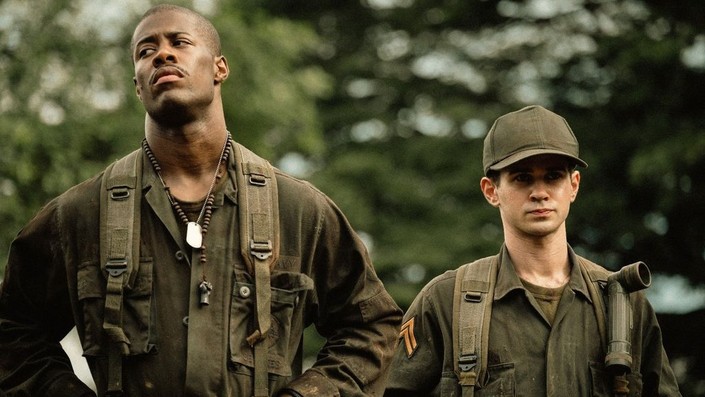Ambush (2023): A Claustrophobic Glimpse into Tunnel Warfare
Ambush (2023), directed by Mark Earl Burman, is a war thriller set during the Vietnam War that attempts to explore a lesser-known but terrifying aspect of combat—tunnel warfare. With a compact runtime and a focused narrative, the film centers on a U.S. Army squad tasked with recovering classified military intelligence hidden deep within the Viet Cong’s tunnel networks. This premise sets the stage for a tense, if uneven, exploration of fear, isolation, and survival beneath the battlefield.
The film stars Jonathan Rhys Meyers as Miller, a hardened tracker, and Connor Paolo as Ackerman, a young and inexperienced engineer who suddenly finds himself leading the mission underground. Aaron Eckhart plays General Drummond, a high-ranking officer who oversees the operation from above. Though the cast includes several recognizable names, the real intensity comes from the ensemble of soldiers who must navigate the dark, claustrophobic, booby-trapped tunnels that conceal both physical and psychological horrors.

The plot begins with an attack on a U.S. outpost that results in the loss of top-secret documents. In response, Ackerman’s team is dispatched into enemy tunnels to retrieve the binder before it falls into the wrong hands. As they descend into the earth, the film shifts tone, resembling a survival thriller more than a traditional war film. Tension builds as the soldiers encounter increasingly dangerous traps, disorienting passages, and mounting paranoia—an environment where visibility, trust, and even sanity begin to deteriorate.
Visually, Ambush utilizes low lighting and tight framing to simulate the disorienting conditions of subterranean warfare. While this can occasionally feel repetitive or visually flat, it effectively communicates the sense of claustrophobia and dread that defined tunnel operations during the war. The jungle-set action scenes above ground are minimal, and the bulk of the narrative is driven by these underground sequences, which rely more on atmosphere than spectacle.

The film’s greatest weakness lies in its reliance on clichés. Dialogue often falls into familiar war-movie tropes—grizzled veterans, naive recruits, and a lack of emotional nuance in portraying the soldiers' inner struggles. While there are moments that hint at deeper character development, they are generally rushed or underexplored. The pacing is also inconsistent, with long stretches of quiet punctuated by sudden bursts of action that don’t always feel earned.
Critically, Ambush received mixed to negative reactions. While some appreciated its focus on a unique aspect of the Vietnam War and its attempt to create tension with limited resources, others found the story predictable and its execution lacking polish. Special effects, particularly in gunfire sequences and explosions, were noted as subpar, undermining the overall immersion. However, the film does succeed in portraying the chaos and terror of tunnel warfare—an often-overlooked front of combat.

In summary, Ambush is a modestly ambitious war thriller that offers a fresh setting but is ultimately held back by a formulaic script and budget limitations. It may appeal to viewers interested in military history or low-budget action dramas, but it lacks the emotional weight or technical finesse needed to stand out among modern war films. Nonetheless, its commitment to depicting the psychological toll of underground combat gives it a distinct, if narrow, place in the genre.

-1751877188-q80.webp)
